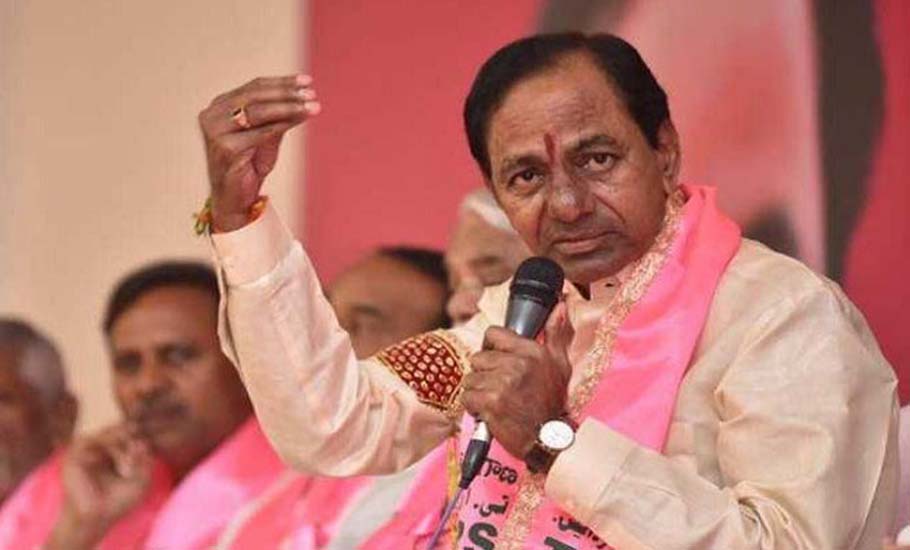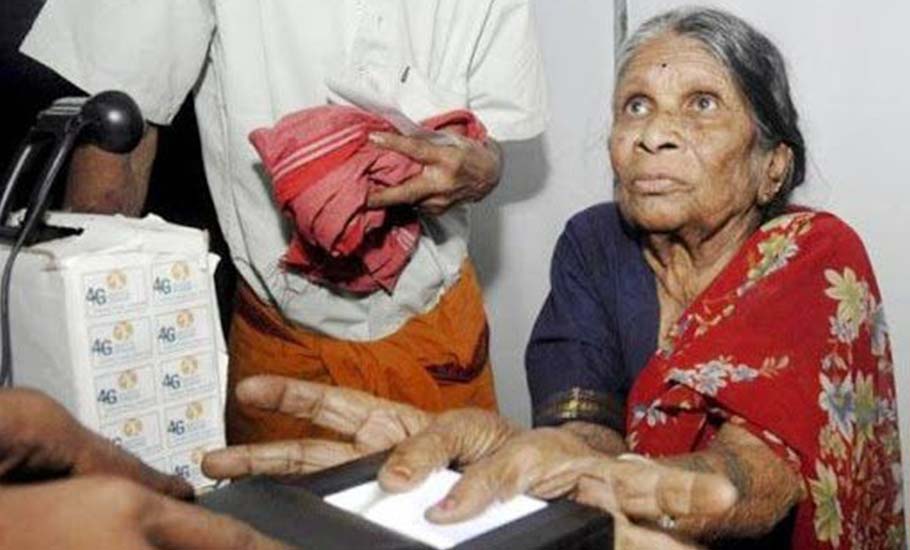
- Home
- India
- World
- Premium
- THE FEDERAL SPECIAL
- Analysis
- States
- Perspective
- Videos
- Sports
- Education
- Entertainment
- Elections
- Features
- Health
- Business
- Series
- Bishnoi's Men
- NEET TANGLE
- Economy Series
- Earth Day
- Kashmir’s Frozen Turbulence
- India@75
- The legend of Ramjanmabhoomi
- Liberalisation@30
- How to tame a dragon
- Celebrating biodiversity
- Farm Matters
- 50 days of solitude
- Bringing Migrants Home
- Budget 2020
- Jharkhand Votes
- The Federal Investigates
- The Federal Impact
- Vanishing Sand
- Gandhi @ 150
- Andhra Today
- Field report
- Operation Gulmarg
- Pandemic @1 Mn in India
- The Federal Year-End
- The Zero Year
- Science
- Brand studio
- Newsletter
- Elections 2024
- Events
- Home
- IndiaIndia
- World
- Analysis
- StatesStates
- PerspectivePerspective
- VideosVideos
- Sports
- Education
- Entertainment
- ElectionsElections
- Features
- Health
- BusinessBusiness
- Premium
- Loading...
Premium - Events

Why should Aadhaar, voter ID not be linked? Telangana has the answers

In 2014, Lubna Sarwat was a Lok Sabha contestant from the Malkajgiri constituency in Telangana’s Hyderabad. Just four years later, she along with her mother, was not even a valid voter from the area. Amid an uproar over the mass deletion of voters that shook Telangana in 2018, Sarwat, a well-known rights and lake protection activist, found that her name and that of her mother were missing...
In 2014, Lubna Sarwat was a Lok Sabha contestant from the Malkajgiri constituency in Telangana’s Hyderabad. Just four years later, she along with her mother, was not even a valid voter from the area. Amid an uproar over the mass deletion of voters that shook Telangana in 2018, Sarwat, a well-known rights and lake protection activist, found that her name and that of her mother were missing from the voter list.
Sarwat, like many others, didn’t know that the names had gone missing until she went looking for it on the list. Sarwat says she did not receive any notice from the Election Commission of India (ECI) before the deletion. Nor was there any visit by the local booth-level officer to physically verify the existence or otherwise of the voter at the given address.
The names disappeared reportedly in the process of linking Aadhaar cards with voter IDs. The numbers were mind-boggling. Not one, two or a few hundred, as many as 3 million (30 lakh) voters found their names struck off the voter list that year depriving them of the right to vote in the 2018 Assembly elections.
The central government’s Election Laws (Amendment) Bill, which was passed last December during the Winter Session of Parliament and proposes to link Aadhaar with voter ID, has brought back bitter memories of the experiences Telangana’s 3 million people had in 2018.
Many are of the opinion that linking Aadhaar with voter ID is not as harmless a process as it is being projected to be. While the government says it’s only meant to eliminate bogus or duplicate voters, Telangana’s experience shows it could be put to use to perilous consequences.

Although the Aadhaar looks, on the face of it, just a unique assortment of 12 digits for each individual, advanced technologies enable ruling parties to convert this into a powerful tool to weed out voters who are likely to vote for the opposition parties.
This was exactly what happened in Telangana in 2015 when the exercise to link Aadhaar with voter ID was taken up. The rampant abuse of the process triggered unrest in the state with many political parties taking to the street and activists knocking at the doors of the courts. Finally, the Supreme Court had to step in to stall the exercise prematurely.
However, by the time the process was halted, the damage was done. As many as 30 lakh voters had been disenfranchised.
Opposition leaders allege that linking Aadhaar with voter ID was used as a pretext to delete names of voters by profiling them on the basis of region, religion and caste among other identity markers during the Samagra Kutumba Survey (SKS) conducted by the state on a single day —August 9, 2014.
By combining the SKS data with the Aadhaar, according to critics, a 360-degree profile of the voter was created which was applied to delete the voters from ‘inconvenient’ areas under various polling stations, castes and social groups.
It is not known how the 30 lakh victims of 2018 were categorised but at the bottom of the whole issue, critics say, was the SKS, which was nothing but an exercise to map profiles and voting behaviour of residents who voted in the first-ever election held after the passage of the Andhra Pradesh Reorganization Act 2014 that paved the way for the creation of Telangana.
The ‘real’ survey
Much to the disappointment of Telangana Chief Minister K Chandrasekhar Rao, his party, the Telangana Rashtra Samithi (TRS), could not get a landslide victory in the 2014 election even though the TRS was largely credited for the creation of Telangana. In fact, both the Telugu Desam Party (TDP) and the Congress emerged as stronger opposition parties.

What was most unpalatable to the TRS supremo was the fact that despite raging anti-Andhra sentiments across the state, the TDP, which was branded as an Andhra party, did not become irrelevant. The TDP’s performance was attributed to the large-scale presence of Andhra voters, who are called ‘settlers’ in Telangana, especially in the Greater Hyderabad Municipal Corporation (GHMC) area.
Post the 2014 election, the TRS government had created a panic of sorts among the ‘settlers’. The Telangana sub-nationalism was so intense at that time that the word settler was used as a synonym for Andhraites who were perceived as ‘unwanted’ in Telangana.
While the TDP was branded as an Andhra party, movie star-turned-politician Pawan Kalyan was not allowed to do political work in the state. Curiously, YS Jaganmohan Reddy gracefully withdrew from the state. There was even talk of the large-scale exodus of Andhrites from Hyderabad.
It was in the midst of this tense atmosphere that KCR announced the Samagra Kutumba Survey to create a 360-degree profile of all the voters in the state in a single day, ostensibly to identify the ‘settlers’. The state declared a holiday to conduct the survey which included columns on place of origin and caste. This lent credence to the fear of future harassment of ‘settlers’ in the state.
Everybody apprehended that since he could not finish the TDP in the election, CM KCR was planning to identify the ‘settler’ hotspots in the state in order to target them for future electoral strategies. Critics such as Kodali Srinivas, an independent free software activist, called it Telangana’s NPR (National Population Register).
State resident data hub
When ECI announced the Aadhaar-voter ID liking programme—National Electoral Roll Purification and Authentication Programme (NERPAP)—in 2015, the Telangana government was fully equipped with an all-round profiling of all residents of the state.
According to the ECI, the NERPAP had to be launched on April 15, 2015, and closed on August 31, 2015. The programme was launched on the basis of the outcome of a little-known pilot project taken up in 2014 in Hyderabad and Nizamabad districts. But the NERPAP had to be stopped on August 11, 2015, following Supreme Court orders which categorically stated that linking Aadhaar with voter ID was legally untenable.
What happened during the process of implementation of NERPAP was the integration of databases namely Aadhaar and SKS. This crucial work is done at a centre called the State Resident Data Hub (SRDH). Not much was known about the existence of SRDH and the possibility of integration of databases until Kiran Chandra Yarlagadda and Srinivas Kodali, both from the Free Software Movement of India, revealed it through an organisation called Swecha.
According to Yarlagadda and Kodali, the SRDH was created by the UIDAI (Unique Identification Authority of India) only to share with the state the information on residents similar to the Aadhaar database without biometrics.
This gap was, however, filled by the data collected through the SKS in 2014 and a Smart Pulse Survey 2016. By integrating Aadhaar with other databases, the SRDH developed a new application that was supplied to the ECI to curate electoral rolls in the name of linking Aadhaar with voter IDs. The result, according to Kiran and Srinivas, was the deletion of targeted voters.
Politically manipulated move?
Former minister and Congress veteran Marri Shashidhar Reddy alleged that as many as 15 lakh names had been deleted from the voter list in 2015 before the Greater Hyderabad Municipal Corporation (GHMC) election. Reddy has been at the forefront in the fight against the mass deletion of names since 2015.
“According to my information, 22 lakh people were denied their voting right in the 2018 assembly election. It was a targeted deletion. The deletions took place in Congress strongholds. Telangana chief electoral officer (CEO) apologised when lakhs of people returned home without voting on polling day,” Reddy said attributing the huge majority TRS got in the 2018 election to the large-scale deletion of voters.
Recalling how the then CEO Banwar Lal had met KCR, Reddy said this unwarranted meeting was a clear sign of collusion between the ECI and the chief minister. “What is unfortunate is that CEOs of Telangana are not living up to the ideal autonomy of ECI,” he said and added the recurrence of such deletions cannot be ruled out in the future as well.
Bojja Arjun Reddy, the advocate who appeared in the Srinivas Kodali Vs Election Commission of India case in the Telangana High Court, said Aadhaar-voter ID linking was not a benign elimination process of bogus or duplicate voters, and is susceptible to manipulation.
“No due process is followed while deleting the names. I made field visits to enquire about the matter. In several instances, deletions were made without any physical verification of the voters and were based on the Form-7 submitted by others,” he said.

Elaborating on the deletion process, Arjun Reddy said, “If a voter’s name is deleted based on Form-7 or otherwise, his name should appear in the ASD (Absentee, Shifted or Dead) list prepared by the ECI. The ECI should provide this list to voters. If a voter finds his name in the ASD list after deletion from the electoral roll, she ought to be allowed to vote with a recognised ID card. But in the Telangana case, ECI refused to provide the ASD list to voters. This clearly shows some mischief on the part of the ECI.”
No form to restore lost voter IDs
While there is an elaborate procedure laid down in the Act for the deletion of voters from the rolls, Sarwat said, there was no application form for the restoration of deleted names.
“The ECI officials gave me Form-6 when I had asked them to ‘restore’ my voter ID. Form-6 is meant only for new voters. It contains an undertaking that one has never taken or possessed a voter ID. Hence, I told the officials that if I file Form-6, I would be committing a crime by giving wrong information. But the officials insisted that there was no provision for any application form for those whose names have been deleted from the voter list.”
The practice of making people fill Form-6 to get their names back on voter lists continues, Sarwat added.
